Key Takeaways
- Hornets are larger than wasps, with smooth, vibrant bodies and narrow waists.
- Common U.S. hornets include the European Hornet (brownish-yellow, active day and night) and the Bald-Faced Hornet (black and white, active during the day).
- Hornet nests vary by species—visible paper nests or hidden spots.
- Hornets can sting repeatedly and defend nests aggressively, posing risk to allergic individuals.
- Prevent hornets by sealing entry points, managing food, and inspecting regularly in warm months.
- Avoid disturbing nests; contact professional pest control for safe removal.

What Does a Hornet Look Like?
- Hornets share some similarities with bees and wasps, but their distinct physical characteristics make them easy to identify with a closer look.
-
Size: Hornets are larger than most wasps, measuring 1 to 2 inches in length, with some species like the Asian giant hornet, growing even bigger.
-
Color and Appearance: They feature bold black and yellow or reddish patterns, with smooth, elongated bodies that are less hairy and more angular than bees.
-
Head and Face: Hornets have large compound eyes, shiny heads, and powerful mandibles for chewing wood and hunting prey.
-
Wings: Hornet wings are long and translucent, folding back neatly when the insect lands. These smooth wings allow for fast and efficient flight, unlike the hairy wings of bees.
-
Sting: A hornet’s sting is one of its most defining features. They can sting multiple times, unlike bees, as their stinger does not detach. Their venom causes intense pain and, in some cases, severe allergic reactions.
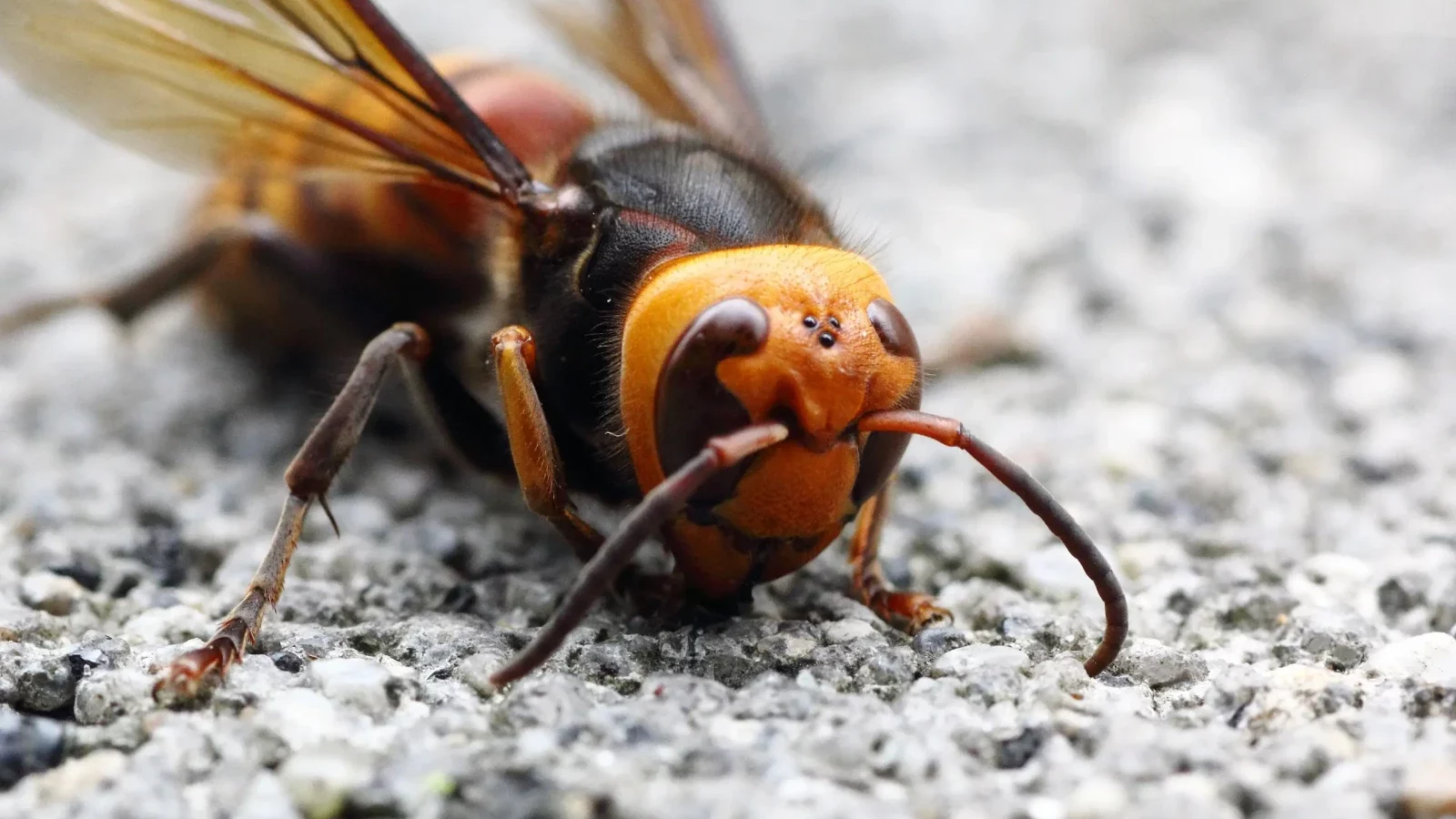

Not getting a solution?
Get your free pest control estimate today!What Is a Hornet?
Hornets are a type of wasp, distinguished by their larger size, aggressive behavior, and potent sting. They belong to the genus Vespa and are social insects that live in colonies. Hornets construct large, papery nests in various locations, such as trees, attics, and shrubs. Found in regions across North America, Europe, and Asia, these insects play an essential role in ecosystems but can become dangerous if provoked or disturbed.Are Hornets Bigger or Smaller Than Wasps?
Hornets are a type of wasp, but they are generally bigger, more aggressive, and have a stronger sting. Hornets are larger than most wasps, with some queens growing up to 2 inches long, while most wasps are only about 0.5 to 1 inch long.How to Identify Hornet Nests
Hornet nests are large, crafted structures made from chewed wood fibers and saliva, forming a durable, paper-like material. This material not only provides strength but also offers insulation and protection against external threats. The primary purpose of these nests is to serve as the colony’s central hub, accommodating the queen, workers, and developing larvae. Hornet nests are typically spherical or oval in shape, with smooth outer layers that shield the inner chambers from harsh weather and predators. The internal structure is very organized, featuring multiple tiers of cells where larvae grow and mature.
The size of a hornet nest varies significantly based on the species and colony population. While early-stage nests are small and compact, they can expand over time, sometimes growing larger than a foot in diameter to accommodate the growing colony.
These nests are often found in prime locations that offer both protection and easy access to food sources. Common nesting sites include tree branches, dense shrubs, attics, roof eaves, hollow tree trunks, and even wall voids in buildings.
Hornet nests are typically spherical or oval in shape, with smooth outer layers that shield the inner chambers from harsh weather and predators. The internal structure is very organized, featuring multiple tiers of cells where larvae grow and mature.
The size of a hornet nest varies significantly based on the species and colony population. While early-stage nests are small and compact, they can expand over time, sometimes growing larger than a foot in diameter to accommodate the growing colony.
These nests are often found in prime locations that offer both protection and easy access to food sources. Common nesting sites include tree branches, dense shrubs, attics, roof eaves, hollow tree trunks, and even wall voids in buildings.
Types of Hornets
Hornets come in various species, each with unique physical characteristics and behaviors.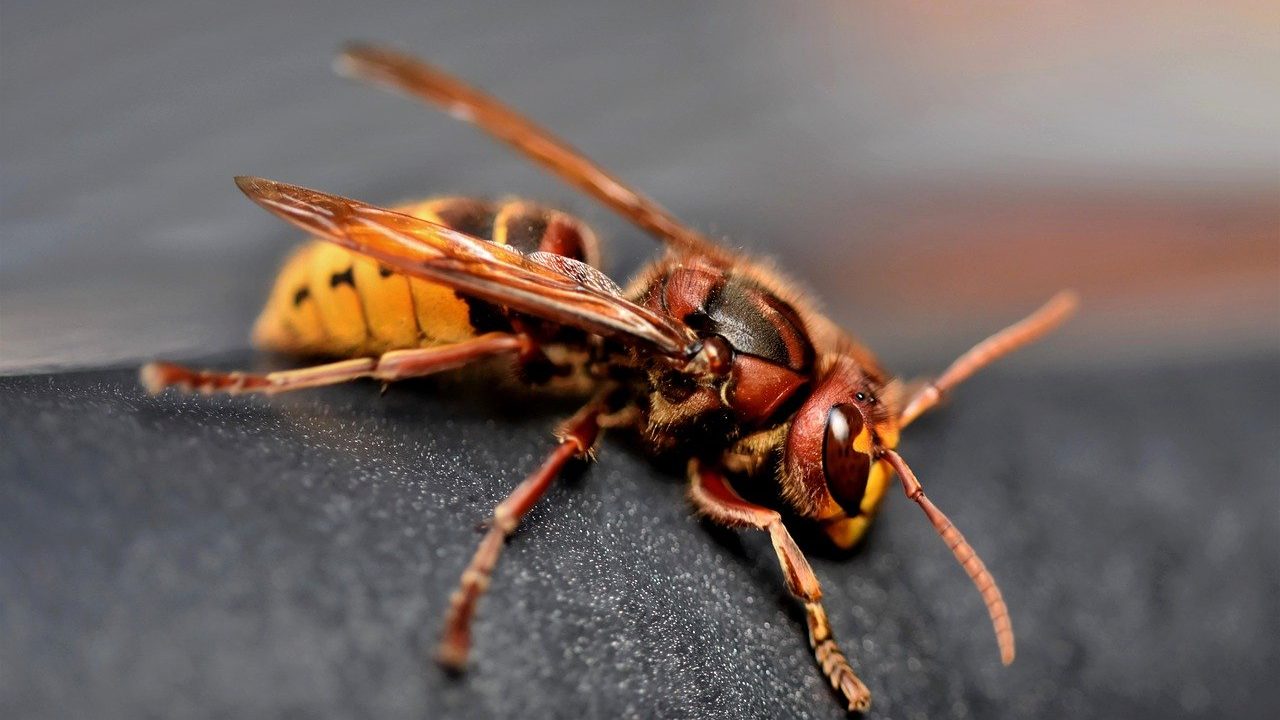
European Hornet (Vespa crabro)
The largest hornet species in North America, with a reddish-brown body and yellow stripes often found in the wooded areas.
Asian Giant Hornet
Known as the 'murder hornet,' this species is infamous for its size and aggressive nature and its painful sting and for attacking.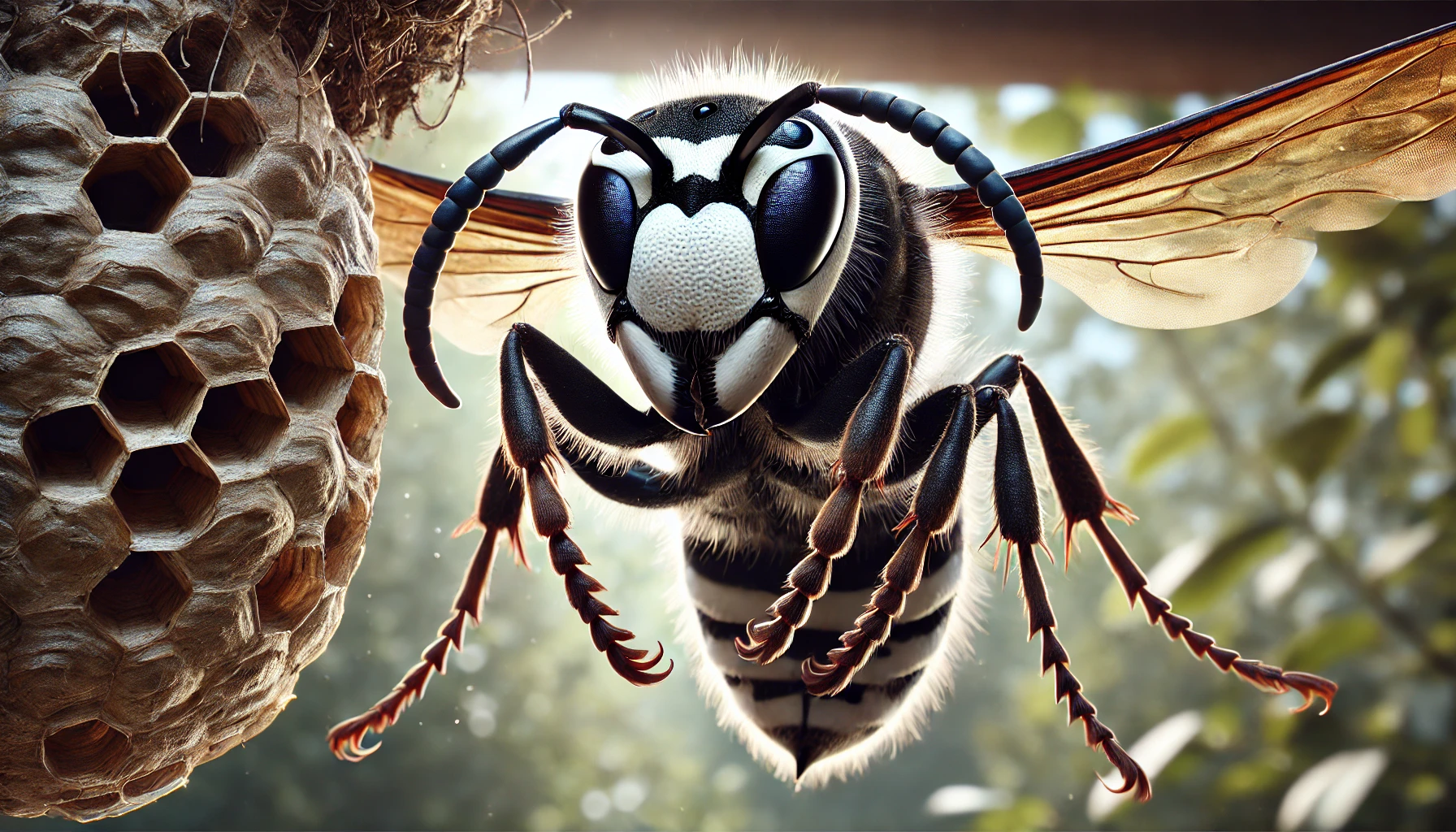
Bald-Faced Hornet
Easily recognized by its black and white markings, the bald-faced hornet is common in North America.Hornet Behavior
Hornets are social insects. They live in colonies of hundreds or thousands of individuals. Understanding their behavior is essential for managing potential infestations. Hornets are territorial and will aggressively defend their nests if disturbed. They are particularly active during late summer and fall when colonies are at their largest. Hornets are omnivorous, preying on insects like flies, caterpillars, and aphids. They are also attracted to sugary substances, including fruits and sodas. Hornets are strong fliers, capable of covering large distances while hunting for food or scouting nesting sites.How to Prevent Hornets in Your Home
Hornets can be dangerous if provoked. Here are tips to stay safe and prevent infestations: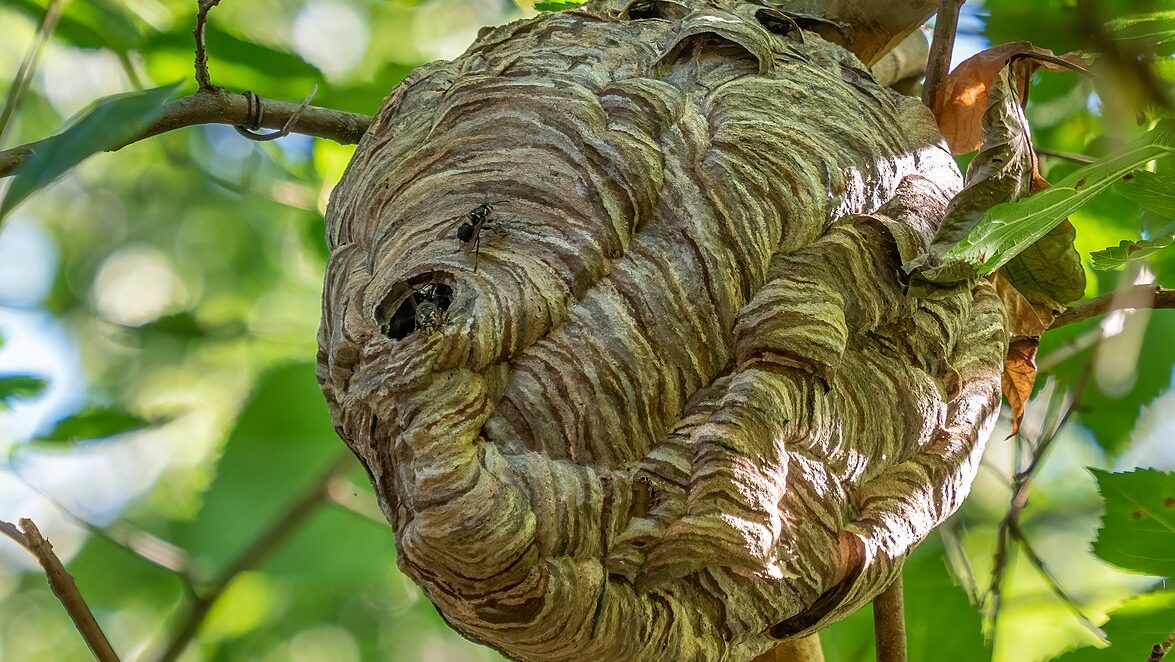
Inspect for Nests
Regularly check trees, eaves, attics, and other sheltered areas for early signs of nests.
Seal Entry Points
Close cracks and gaps around windows, doors, and walls to keep hornets from entering your home.
Cover Food & Drinks
Keep sugary foods and drinks covered when outdoors, especially during late summer when hornets are most active.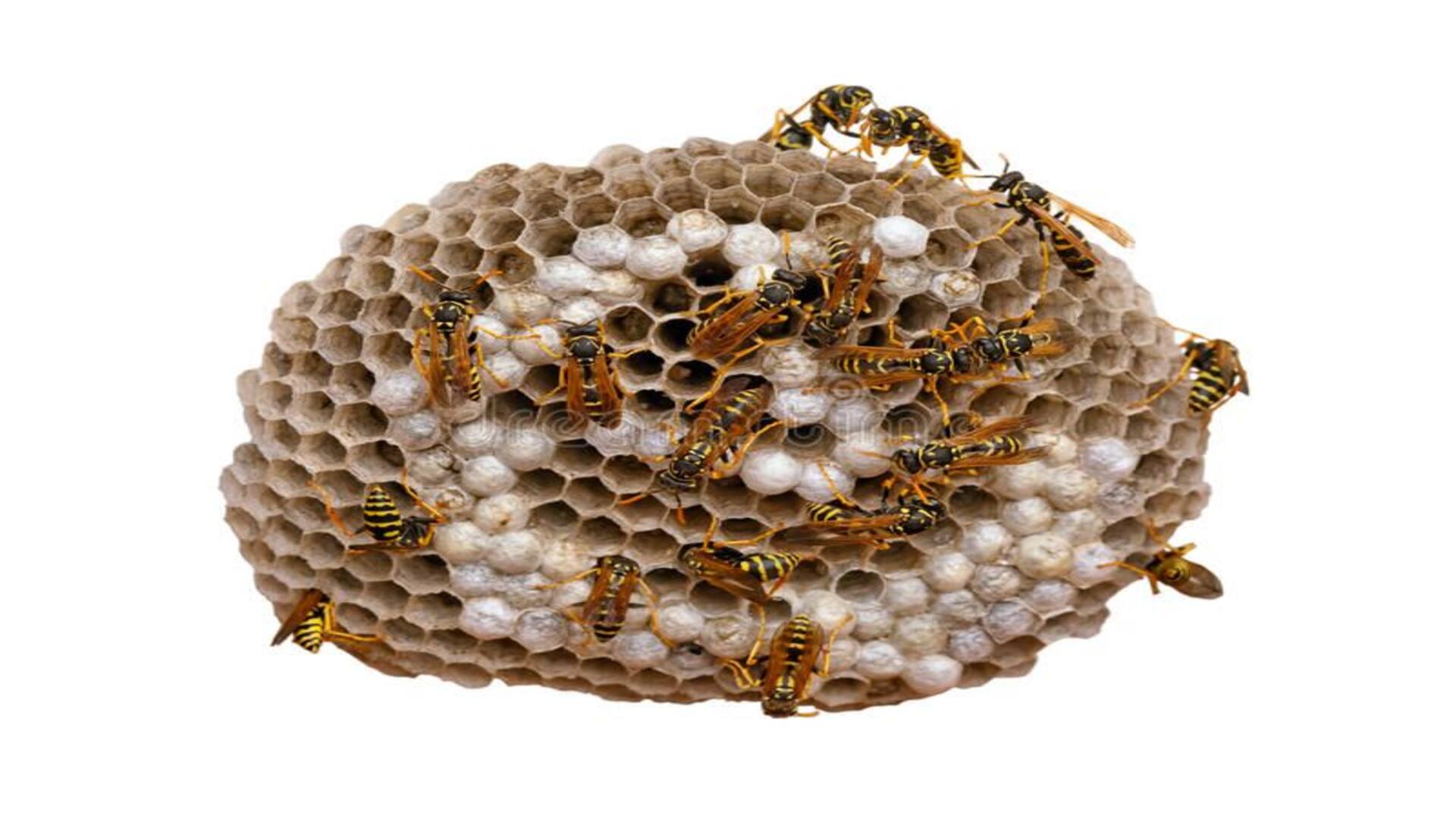
Stay Away from Nests
If you spot a nest, stay away and contact professionals for removal.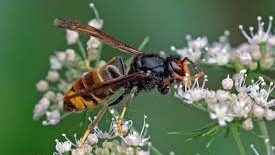
Move Slowly
Move slowly away from the hornet and avoid swatting, as sudden movements can provoke it.
Hire Experts
If you find a hornet nest on your property, it’s safest to let a pest control expert handle its removal.Myths & Facts About Hornets
Hornets are often misunderstood due to common myths. Here are a few common misconceptions and facts about hornets:| Myth | Fact |
|---|---|
| Hornets only attack when provoked. | Hornets may also sting to defend food sources or their territory. |
| Hornets can only sting once. | Unlike bees, hornets can sting multiple times without losing their stinger. |
| Hornets and wasps are the same. | While hornets are a type of wasp, they differ in size, nesting habits, and behavior. |
| Hornets are always aggressive. | Hornets are not naturally aggressive and typically attack only to defend their nests or themselves. |
| Hornets die after stinging. | Unlike bees, hornets do not die after stinging and can sting repeatedly without harm to themselves. |





